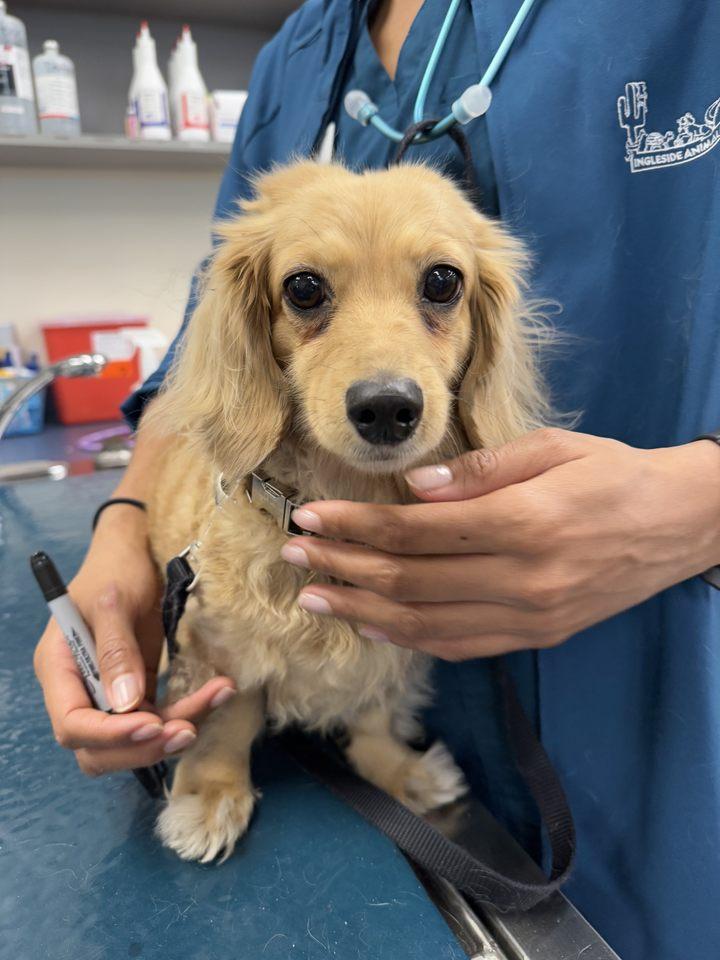
Therapeutic Laser Therapy: A New Innovation in Pet Care In veterinary medicine, therapeutic laser therapy is used to heal and relieve pain. The most common indication for this type of laser therapy in pets is arthritis or degenerative joint disease. It is also used for post-surgical recovery or any wounds or trauma to the skin, bone, or muscle. Therapeutic laser therapy is very effective for painful conditions, promotes healing, and facilitates functional recovery.
How & Why Therapeutic Laser Therapy Works
Stated simply, laser therapy uses light to heal the body from within on a cellular level. Photons of light are gently streamed over the pet’s affected area. Used widely on humans in sports medicine, laser treatments are non-invasive, non-toxic, and have no side effects. Laser therapy is a pain-free, surgery-free, and drug-free treatment. Some of the well-documented effects of laser therapy are cartilage stimulation, production of fibroblasts (the cells that create healing tissue), enhancement of immune cells, and increased blood supply to heal tissue.
In summary, laser therapy:
- Decreases inflammation and edema
- Stimulates cartilage production and nerve regeneration
- Decreases pain (produces endorphins and releases serotonin)
- Accelerates wound healing and increases circulation
- Relaxes muscles
- Stimulates acupuncture points
How Pets Respond to Therapeutic Laser Therapy
Most pets find laser therapy relaxing and feel no sensation during treatments. At Ingleside Animal Hospital, we use cold laser, so there is only a mild sensation of heat. Dogs, in particular, find treatments calming and some experience it much like a massage or good petting session. For some pets, pain reduction is immediate and experienced instantly following the first treatment. Typically, a series of treatments is recommended.
Learn more about therapeutic laser from ABC News.
To discuss if your cat or dog would benefit from therapeutic laser therapy, please contact us.
Companion Laser
Jillian, CVT
Ingleside Animal Hospital
Hello, I'm Jill. I'm a certified veterinarian technician here at Ingleside Animal Hospital, and I'm going to talk to you today about our laser therapy. For those of you that bring your pets in for laser therapy treatments, or maybe you had a friend or a doctor recommend it for your pet, and you wondered what it's about and how we use it, that's what I'm going to demonstrate to you here today. It's really user-friendly and very low-risk for anything going wrong. However, we ensure that everyone using it is fully trained in using it properly. You can see it here, and I'm just going to go through the steps on how to set it up. We're going to set it up for a small canine. Our canine is going to be between the 0 and 20-pound range in average weight and medium coat length. We'll say that her coat color is pretty light, as well as her skin color. You can see the list here of all the different types of treatments that we can choose from. Today we'll choose the arthritis setting, and we'll treat the knee area today.
Now we have the proper amount of wattage set up, and I will show you how we use that. The first thing we're going to do is put on our protective eyewear. We have our little husky friend here that I'm going to demonstrate on. Because she is small, we have her on the tabletop. We'll treat small dogs and cats up here. We'll have medium to large dogs down here with an assistant holding them. I'm going to go ahead and start our laser treatment. It's not painful at all. It's just a warm light, basically. This light emits photons, which penetrate into individual cells and the cells' membranes and structures. One of those structures would be the mitochondria, the cell's powerhouse. When that's stimulated, it increases that power cell energy, which is your ATP. That will help normalize the cell function, which helps regenerate more cells and helps with all types of things, such as inflammation, pain relief, swelling, and things like that.
As you can see, I'm using a contact head. It's great for things like arthritis and muscular deep-tissue injuries. If I were to use it on something like an open wound, dermatitis, hotspots, or postsurgical incisions, then I'm going to use the non-contact head. In that case, we're not going to have any contact with the area. It's just going to be about an inch above that area. It's simple to use and really safe. It really helps with scarring and increases the healing time. If you ever notice that your patient gets a laser treatment and then goes home and has a little bit of extra pep in their step and seems a little happier, it's probably because it's helping release endorphins. That's really nice for them as well. All right, so we are done with our treatment here, and if you guys have any other questions, feel free to drop a comment and ask us, and we'll be happy to answer that. Thank you.
If you still have other questions and you'd like to reach out to us, you can call us directly at (602)-833-7511
For more than five decades, families from greater Phoenix, Arcadia, Paradise Valley, Tempe, and Scottsdale in Arizona have come to rely on our trustworthy and compassionate care. As an AAHA-accredited, Fear Free, and Cat Friendly facility, your pet’s well-being and comfort are our highest priorities.
